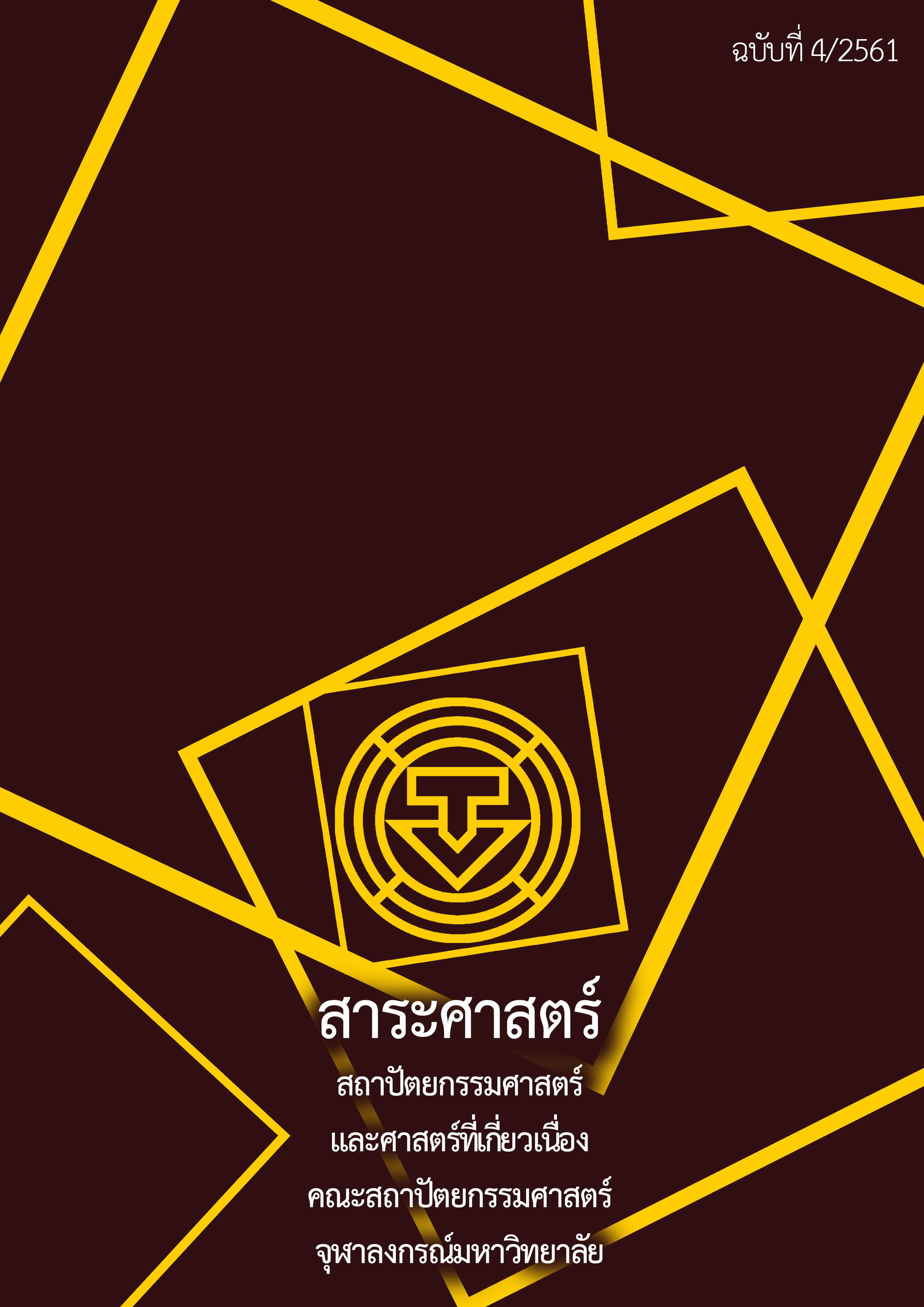Ecological Restoration Guideline for Closed Limestone Mines in Central Thailand Through The Analysis of Landscape Patches
Main Article Content
Abstract
Mining is the cause for Limestone Mountains to lose their Ecological Services, so, landscape restoration is needed after mine closure. However, nowadays the knowledge of landscape restoration method is still inadequate. Therefore, this research aims to study and propose the guidelines for restoration of closed limestone mines. The study explores mining processes, concept of restoration, landscape and environmental factors affecting those processes, including in-depth interview from five professionals, involved in limestone mining and restoration. Also, four successful mining restoration sites in the Central of Thailand are selected to analyze.
The results indicate that Landscape Patch which characterized from topography and vegetation covering, together with environment factors directly contributed to the effectiveness of restoration, which mainly use re-vegetation method with pioneer species. Moreover, if the stimulated restoration reaches to its Secondary Succession, the duration of restoration can be reduced and site’s ecological service can be restored. Anyway, the objectives of using the reclaimed site after this are also the factors for selecting the restoration methods. In conclusion, the recommended landscape restoration guidelines for closed limestone mines consist of: identifying objectives of restoration and site usages, stabilizing endangered slope, planting drought tolerant pioneer plants according to its landscape and environmental factors, and stimulating secondary succession by using climax species to creating landscape patches and appropriate ecological services.
Article Details
References
ฟื้นฟูพื้นที่เหมืองแร่. กรุงเทพฯ: กรมอุตสาหกรรมพื้นฐานและการเหมืองแร่, 2548.
กระทรวงทรัพยากรธรรมชาติและสิ่งแวดล้อม. สำนักงานนโยบายและแผนทรัพยากรธรรมชาติและสิ่งแวดล้อม. แผน
จัดการคุณภาพสิ่งแวดล้อม พ.ศ. 2560-2564. กรุงเทพฯ: กระทรวงทรัพยากรธรรมชาติและสิ่งแวดล้อม, 2560.
จิรากรณ์ คชเสนี. นิเวศวิทยาพื้นฐาน. พิมพ์ครั้งที่ 4. กรุงเทพฯ: สำนักพิมพ์แห่งจุฬาลงกรณ์มหาวิทยาลัย, 2553.
“พระราชบัญญัติแร่ พ.ศ. 2560.”ราชกิจจานุเบกษา. เล่ม 134 ตอนที่ 26ก หน้า 1-55. (2560, 2 มีนาคม).
“พระราชบัญญัติส่งเสริมและรักษาคุณภาพสิ่งแวดล้อมแห่งชาติ พ.ศ. 2535.” ราชกิจจานุเบกษา. หน้า 1-38. (2535, 4 เมษายน).
ไพรัตน์ เจริญกิจ. “การฟื้นฟูพื้นที่ที่ผ่านการทำเหมืองแล้ว (Mined land rehabilitation, mined land reclamation).”
จุลสาร กพร., 4 (ตุลาคม-ธันวาคม 2550): 5-6.
วัชรินทร์ กาสลักและดลฤดี หอมดี. ธรณีวิทยาวิศวกรรม. กรุงเทพฯ: วิศวกรรมสถานแห่งประเทศไทย ในพระบรม
ราชูปถัมภ์, 2558.
โสมนัสสา แสงฤทธิ์, วรดลต์ แจ่มจำรูญและนันทวรรณ สุปันตี. พรรณไม้เขาหินปูน: สถานภาพและปัจจัยคุกคาม.
กรุงเทพฯ: สำนักงานหอพรรณไม้ สำนักวิจัยการอนุรักษ์ป่าไม้และพันธุ์พืช, 2556.
Marsh, William M. Landscape Planning Environmental Applications. 4th ed. Hoboken, NJ.: John Wiley
& Sons, 2005.
Odum, E.P. and G.W. Barrett. Fundamentals of Ecology. 5th ed. Califonia: Thomson Brooks Cole,
2005.
Siachoono, S.M. “Land Reclamation Efforts in Haller Park, Mombasa.” International Journal of
Biodiversity and Conservation 2 (February 2010): 19-25.
Wang, J., Fuqiang Zhao, Jian Yang and Xiaoshu Li. “Mining Site Reclamation Planning Based on Land
Suitability Analysis and Ecosystem Services Evaluation: A Case Study in Liaoning Province, China.”
Sustainability 9, 890 (May 2017).


